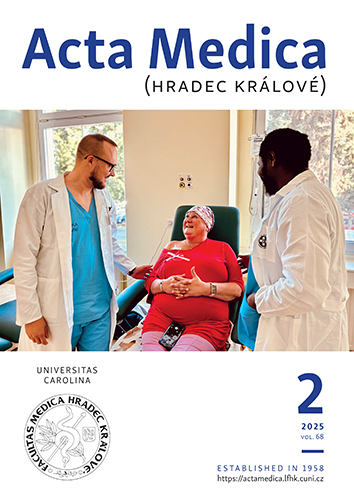ACTA MEDICA, Vol 65 No 2 (2022), 66–70
Stressor Effects on Sex Ratios and Births in the Maltese Population during the First Half of the 20th Century
Charles Savona Venture, Victor Grech
DOI: https://doi.org/10.14712/18059694.2022.20
zveřejněno: 02. 12. 2022
Abstract
Background: The sex ratio at birth (male/total = M/F) is expected to approximate 0.515. Stress is known to reduce livebirth M/F. In the first half of the 20th century, Malta was stressed by two World Wars. Objectives: This study was carried out in order to analyse changes in reproductive performance and M/F of stillbirths and livebirths in Malta during this period. Methods: Livebirth and stillbirth data (1910–1951) were obtained from official published Maltese government reports. Stillbirths were defined as any antenatal loss after 28 weeks of gestation. Results: This analysis studied 347,562 live and 11,662 stillbirths. For 1919–1951, M/F at birth was 0.517, stillbirth M/F was 0.664, implying 28/40 M/F = 0.522. Assuming conceptional M/F = 0.5, estimated M/F for fetal wastage before 28 weeks was approximately 0.434. There was a decrease in the overall birth rate starting after 1911 to 1921, more marked for 1941–1943 followed by an overshoot in 1943–48. There was a statistically significant drop in M/F livebirths during the periods 1916–21 and 1934–45. Stillbirths decreased significantly after 1935 (M>F). A stillbirth M/F drop in 1937–45 and rise in 1946–51 were statistically significant. Conclusions: Birth rate drops in both wars were ascribed to conscription, adverse living conditions and decreased fertility from nutritional restrictions. Both conflicts resulted in short post-war baby booms. The decrease in stillbirths is attributed to increase in antenatal attendances, hospital births and special food rations for pregnant women. The M/F observations suggest that the selective survival of both healthier female and male foetuses is favoured during times of stress.
klíčová slova: birth rate/trends; sex ratio; Malta; infant; newborn; starvation

Stressor Effects on Sex Ratios and Births in the Maltese Population during the First Half of the 20th Century is licensed under a Creative Commons Attribution 4.0 International License.
210 x 297 mm
vychází: 4 x ročně
cena tištěného čísla: 150 Kč
ISSN: 1211-4286
E-ISSN: 1805-9694
